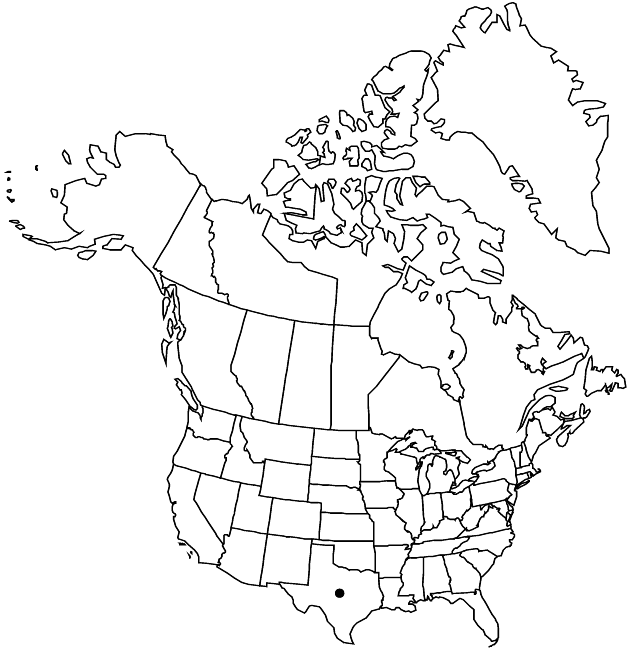Cirsium turneri
SouthW. Naturalist 5: 101. 1960.
Perennials 15–45 cm; stout, branched caudices. Stems 5–30+, horizontal or hanging from cliff sides, thinly appressed gray-tomentose and villous with septate trichomes; branches 0–few, distal, ascending. Leaves: blades oblong-elliptic to oblanceolate, 5–30 × 1–5 cm, shallowly to deeply pinnatifid, lobes spreading, triangular, coarsely dentate or lobed, obtuse to acute, main spines slender, 4–10 mm, abaxial faces green or gray-tomentose, villous with septate trichomes along midveins, ± glabrate, adaxial green and glabrous or thinly tomentose, ± glabrate; basal often present at flowering, spiny winged-petiolate; principal cauline sessile, gradually reduced distally; distal oblong, bases ± clasping, usually less deeply lobed and often spinier than proximal. Heads 1–6+, borne singly or in condensed corymbiform arrays. Peduncles 0–1 cm. Involucres cylindric to narrowly campanulate, 3.5–4.5 × 1.5–2 cm, loosely arachnoid, glabrate, finely short-ciliate. Phyllaries in 5–6 series, imbricate, linear-lanceolate (outer) to linear (inner), entire, abaxial faces without glutinous ridge, apices red to reddish purple, stiffly ascending, long-acuminate, spines straight, 1–10 mm, ± flattened; apices of inner stramineous to red, straight or flexuous. Corollas red to reddish purple, 26–27 mm, tubes 3.5–5 mm, throats 7.5–9.5 mm, lobes 12–14 mm; style tips ca. 3 mm. Cypselae stramineous, 5–6 mm, apical collars not differentiated; pappi 20–25 mm.
Phenology: Flowering summer (Jun–Sep).
Habitat: Crevices in limestone or basaltic cliffs
Elevation: 900–1500 m
Distribution

Tex., Mexico (Chihuahua, Coahuila).
Discussion
Cirsium turneri is known from the mountains of the Big Bend area of trans-Pecos Texas and adjacent areas of northern Mexico.
Selected References
None.